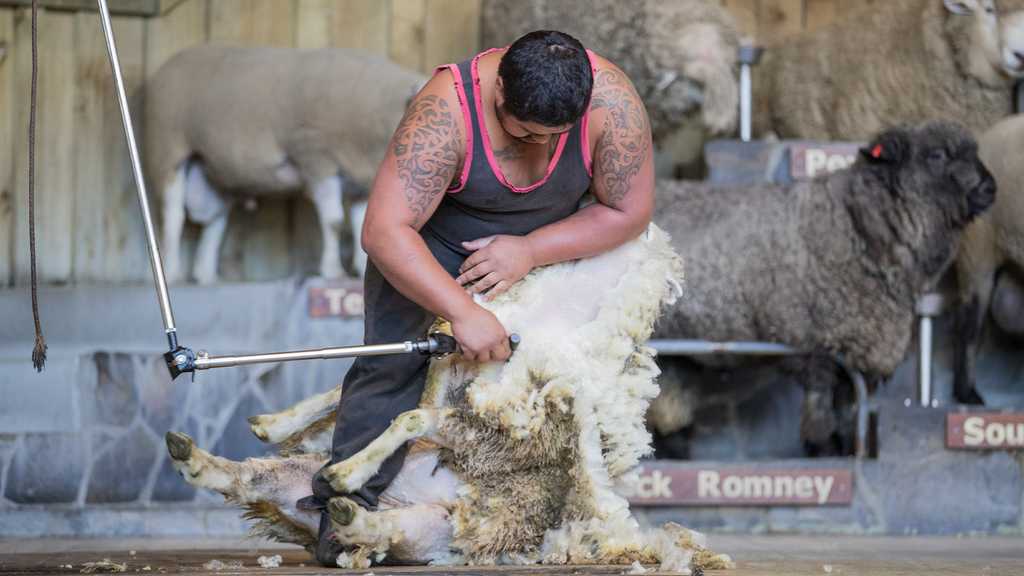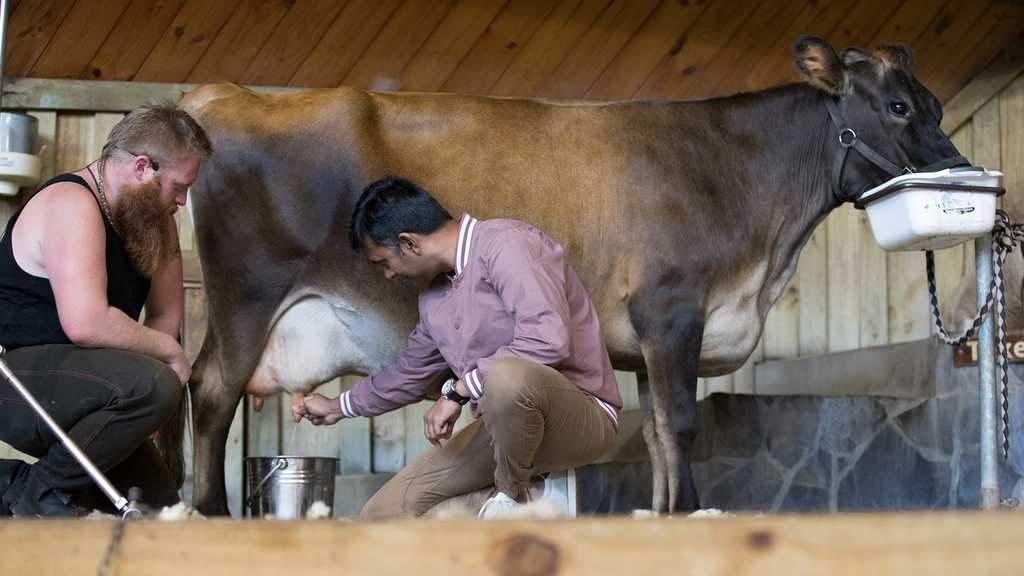Farming in New Zealand
Farming or agriculture is New Zealand’s largest industry. Pastoral farming of sheep and cattle is the main type, but horticulture is also common. Here are some facts about New Zealand farms and the farming lifestyle.
Sheep farming
Sheep farming has been crucial in the development of the New Zealand economy, and for 130 years was the most important agricultural industry. The image of New Zealand as a country full of sheep is well founded! In 1982 New Zealand’s sheep population peaked at 70 million, and while it is lower today (only five sheep per person, compared with 22 at its highest), New Zealand is still the world’s largest exporter of lambs.
Sheep are farmed for their meat and wool. The South Island’s terrain and climate in particular make it ideal for sheep farming. Popular types of sheep in New Zealand include:
- Merino sheep: Originally from Spain, producing fine wool
- Corriedale sheep: A cross between the Merino and some English breeds.
- New Zealand Romney sheep: One of the most populous sheep breeds
- Drysdale sheep: Hairy coarse wool, often used in carpet
- Perendale sheep: Good for both meat and wool
- Coopworth sheep : Good for both meat and wool
Sheep shearing in New Zealand
Around 220,000 tonnes of wool is shorn from New Zealand sheep each year. Shearers often work in gangs and travel from farm to farm. Improvements in technology have made the shearing process safer and faster, but it is still hard physical work. Shearing competitions are held in New Zealand to find the fastest shearer and New Zealand shearers are often international shearing champions. You can watch a sheep-shearing demonstration when you visit the Agrodome in Rotorua.
Sheep shearing in New Zealand
Dairy Farming
New Zealand is the world’s 8th largest milk producer, with just under 5 million dairy cows producing over 21 billion litres of milk annually. The main regions for dairy farming in New Zealand are Waikato, Taranaki, Southland, Northland, Horowhenua, Manawatu and Westland. The main breeds of dairy cows in New Zealand are Holstein-Friesian, Jersey and Ayrshire as well as the more recently bred KiwiCross. Livestock is mainly grass-fed.
The first milk-processing factories opened in the 1880s and the first milking machines were introduced in 1893. By 1920 there were 600 factories around New Zealand. Today our largest dairy company is Fonterra, a co-operative owned by 10,000 farmers, which supplies around 95% of New Zealand’s milk. New Zealand produces more than 100 types of dairy products, including whole milk, cream, butter, cheese, milk powder and buttermilk.
Milking a New Zealand dairy cow
Beef Farming
Cattle are also farmed for their meat. The first cattle were brought to New Zealand in 1814. During the pioneer days they were useful because they could survive on rough pasture and could pull heavy loads as well as providing meat. Cattle and sheep are often farmed together and fed on grass. Common cattle breeds in New Zealand include Herefords, Angus and Shorthorns. Deer farming is also on the increase and New Zealand is the largest exporter of farmed venison in the world.
Horticulture
New Zealand’s fertile soil is great for growing fruit and vegetables. We grow stone fruit like peaches, nectarines, plums, apricots and cherries in the Hawke’s Bay and Otago regions, while apples and pears grow well in the Hawke’s Bay and Tasman district.
The kiwifruit (also known as the Chinese gooseberry or just kiwi) is New Zealand’s largest horticultural export by value. It is mostly grown in the Bay of Plenty region, along with avocados, which thrive in the climate. For citrus, head to the Northland, Gisborne and Auckland regions, while grapes are grown to make wine around the country but particularly in Marlborough, Hawke’s Bay, Gisborne, Martinborough, Marlborough and Central Otago. Find New Zealand food and wine tours.
Aquaculture
Commercial fishing operates around New Zealand with mussel, oyster (including the famous Bluff oyster) and salmon farms around the country.
Farming life and New Zealand culture
Farmers spend a lot of time outdoors doing hard, physical work. Because farming is such a large part of New Zealand’s history, rural culture has informed New Zealand culture as a whole and a lot of depictions of the ‘typical’ New Zealander involve farming. For example, New Zealanders are proud of their ‘number 8 wire’ mentality – meaning the ‘do-it-yourself’ tradition, and referring to a type of fencing wire used on farms that Kiwis will use to solve any problem.
The stereotypical New Zealand outfit is a black singlet, stubbies (shorts) and gumboots (Wellington boots). For a long time this was a common outfit for farmers in New Zealand. And speaking of gumboots, rural life has also influenced New Zealand language! Words like bush (forest), razorback (a steep ridge), paddock (meadow), gully (valley), Taranaki gate, Swanndri (a brand of woollen shirt) are all common in Kiwi language today.

